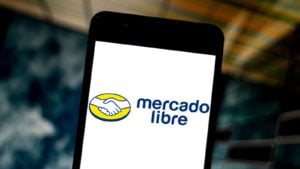Accountability is important when it comes to investing. We all tend to remember our winners and ignore the losers. It can create a bias when discussing whether a strategy is worth following. Or whether you should listen to an online pundit.
There is no end of analysts touting their home runs but glossing over their strikeouts. That’s why I wanted to review seven stock picks I made one year ago in May. Although I strongly advocate a minimum ownership period of three to five years for a stock, with a decade or more (or a lifetime even) being optimal, a one-year review is sufficient to see if we’re at least heading in the right direction.
I covered 12 different companies last May. Though not all were exactly recommendations, I also didn’t say “steer clear” either. For example, in my article “3 Stocks Warren Buffett Is Betting on Big Time,” I noted Paramount Global (NASDAQ:PARA) had a very weak business model but said perhaps the discount the stock was offering at the time (down 50%) might be enough to attract some investors. Not a ringing endorsement but I’ll own that I didn’t say avoid this value trap (I did do that the next month, though, in my article “3 Stocks to Sell as Companies Prepare for Layoffs“).
| Stock | Total Return % Change |
vs. S&P 500 |
| Devon Energy (NYSE:DVN) | 4.2% | (21.6%) |
| Chevron (NYSE:CVX) | 4.5% | (21.3%) |
| Enterprise Products Partners (NYSE:EPD) | 19.4% | (6.4%) |
| MercadoLibre (NASDAQ:MELI) | 25.7% | (0.1%) |
| Digital Realty Trust (NYSE:DLR) | 55.3% | 29.5% |
| Genuine Parts (NYSE:GPC) | (4.0%) | (29.8%) |
| Bank of America (NYSE:BAC) | 35.6% | 11.5% |
| Occidental Petroleum (NYSE:OXY) | 10.4% | (13.7%) |
| Paramount Global (NASDAQ:PARA) | (12.8%) | (36.9%) |
| American States Water (NYSE:AWR) | (17.0%) | (40.7%) |
| PPG Industries (NYSE:PPG) | 0.8% | (24.5%) |
| Exxon Mobil (NYSE:XOM) | 13.5% | (10.2%) |
My report card
So how did I do? Not bad! Of the 12 stocks I discussed, nine generated positive returns and just three had negative returns, a 75% success rate. However, maybe you were still better off buying an S&P 500 index fund.
While the average return of my winners was 18.8% compared to my losers negative 11.3% — giving me an average return of 11.3% — the broad market index did much better with a 24.9% average return. A better than two-to-one drubbing. Add the sad trombone sound here.
What follows is a look at my four best picks from last year and the three worst. Caveat emptor!
Digital Realty Trust (DLR)

In retrospect, the case for Digital Realty Trust (NYSE:DLR) was easy to make. The need for data centers was growing exponentially and the real estate investment trust (REIT) was the biggest owner of data centers in the world with over 300 facilities. Even then it was apparent that artificial intelligence (AI) would be a driving force in their adoption and growth.
I quoted DLR CEO Andy Powers as saying, AI “could spawn a wave of adoption and a proliferation of use cases and ultimately drive demand for compute infrastructure at scale.”
That holds true today. Companies used to keep data close to home, but speed and security necessitate data be dispersed. A hybrid model, where a mix of on-premise and cloud-based storage is optimal, is seen as gaining traction in the very near future. McKinsey & Company forecasts data center demand will grow by a compounded rate of 10% annually until 2030.
As Digital Realty counts some of the biggest, most important companies as customers, including Meta Platforms (NASDAQ:META), JPMorgan Chase (NYSE:JPM), and Oracle (NYSE:ORCL), it is likely to consume much of that demand.
Bank of America (BAC)

If Buffett is buying, we probably should be too. That was essentially the take away of my endorsement of Bank of America (NYSE:BAC). A year ago the Oracle of Omaha had dumped virtually all of his bank stocks after the regional banking crisis. However, there was one that he was buying: Bank of America. He had bought nearly 23 million shares, giving him more than 1 billion shares total.
The reason to ride Buffett’s coattails was easy. Consumers were fleeing small, less financially stable banks and heading to larger, more mature institutions like BoA. Its assets were at risk in the high interest rate environment we were suffering through, but it was also padding its net interest income from the loans it was making.
I noted the other day interest rates had caused Bank of America’s unrealized losses to balloon to $122.8 billion, but since almost all were in its held-to-maturity portfolio there was no need to move them to the realized column. There was time enough before they matured for the situation to normalize and BoA could perhaps even make a profit from them by the time they were due.
Bank of America is a much more financially sound bank than it once was and was worth holding onto.
MercadoLibre (MELI)

Latin American e-comerce and fintech leader MercadoLibre (NASDAQ:MELI) seems like another easy call when looking back. Because it focused solely on the central and south American markets, it was betting on their economies growing and expanding more than more developed markets.
MercadoLibre was seeing solid growth in gross merchandise volumes and total payment volumes as consumers increasingly became more digitally aware. It has the leading e-commerce platform in the region where growth was soaring by 25% or more and its Mercado Pago fintech platform was seeing a doubling in usage.
I had noted that at first glance the stock might not seem cheap since it traded at 56 times earnings estimates but because profits margins were readily inflating it would grow into the premium. With the stock now up 25% from last year, MercadoLibre stock has done just that: it now trades at 34 times estimates. Expect to see a further narrowing of the gap in the future.
Enterprise Products Partners (EPD)

Oil and gas middleman Enterprise Products Partners (NYSE:EPD) is still an easy stock to recommend but one that carries an asterisk. The master limited partnership (MLP) owns and operates an expansive network of pipelines and storage facilities across the country. It has a great business model that ensures it is profitable.
Enterprise Products operates under long-term contracts with its customers that contain take-or-pay clauses. That means customers pay for the capacity of its transmission lines or its storage tanks and whether or not they are actually used, the industry middleman still gets paid. So it doesn’t matter what the price of oil or gas is today, Enterprise Products Partners still gets paid.
The one wrinkle, of course, is that EPD is structured as an MLP. Because MLPs are required by law to distribute 90% or more of their profits to investors as dividends, they introduce more complicated tax considerations. I’ve noted an investor may not want to own an MLP in a normally tax-deferred individual retirement account because you could end up owing taxes. It might not be an investment for everyone, but it is potentially lucrative for those who can or do buy.
Genuine Parts (GPC)

Okay, I’ll say it: Genuine Parts (NYSE:GPC) should be in my win column. The owner of the NAPA Auto Parts chain of retail stores ought to benefit more from the ongoing economic conditions ravaging consumers. Rising inflation and high interest rates have taken a toll on both new and used car sales. While both have come down from record levels, they remain well above historical trends.
That would bode well for aftermarket auto parts companies like Genuine Parts. Drivers will keep their existing vehicles operating longer to keep from having to buy a new one. So although interest rates kept consumers from financing new car purchases, inflation was also hitting them in the pocketbook. They just curtailed their spending. It’s a situation that is playing out across many industries now as the Federal Reserve’s higher-for-longer policies take their toll.
What eases the pain of Genuine Part’s softness is its dividend, which it has increased for over 50 years. The auto parts retailer is a Dividend King whose payout yields 2.5% annually.
Paramount Global (PARA)

As noted above, movie studio Paramount Global was in sorry shape such that even Warren Buffett didn’t like the company. Especially after the company slashed its dividend from 24 cents to 5 cents, a move Buffett called “not good news,” he was resigned to see what transpired with the stock.
Shares bounced 27% off their lows in recent weeks as the movie studio negotiates a sale of the company. It’s complicated though, because Shari Redstone owns a controlling interest. Her objectives are not necessarily the same as the rest of the shareholders. She is trying to merge Paramount with Hollywood studio Skydance in an exclusive arrangement but the board said she should have entertained the offer from private equity firm Apollo Global Management, which is working with Sony Pictures to acquire the company.
There will be more negotiations for the movie and streaming company that does own some valuable assets. And it may come down to Paramount Global eventually becoming someone else’s problem out of the limelight of Wall Street. It won’t be Buffett’s though. He told investors at Berkshire Hathaway‘s (NYSE:BRK-A)(NYSE:BRK-B) annual meeting, “We sold it all, and we lost quite a bit of money.”
American States Water (AWR)

Utilities such as American States Water (NYSE:AWR) have been particularly hard hit by the Federal Reserve’s monetary policies. Because they are heavily regulated and required to maintain, upgrade and repair their facilities, high interest rates inflates their borrowing costs. At the same time, they are subject to the whims of local utility boards in whether they win rate increases.
Yet that’s also one of their more attractive aspects too. They are a known quantity with a reliable business model that generates a substantial revenue stream. They use that money to pay handsome dividends to shareholders. American States Water has been among the best, paying a dividend for 87 consecutive years. It has increased the payout for 69 straight years.
Unfortunately, the macroeconomic environment weighs more heavily on its stock price. And because of profligate spending in Washington, inflation is remaining intransigent causing the Fed further delay any hoped-for rate cuts. Inflation is heading in the wrong direction again. Although chairman Jerome Powell says new rate hikes are “unlikely,” that doesn’t mean they are not possible.
It looked a lot better for AWR when there was talk of three, four, or even six possible rate cuts. Now, cuts seem off the table for most of the year and increases could be back on the table. Expect a period of underperformance for AWR stock to continue, though that long-term mindset I said was appropriate earlier still makes this a stock to consider.
On the date of publication, Rich Duprey held a LONG position in CVX, PPG, XOM, GPC and AWR stock. The opinions expressed in this article are those of the writer, subject to the InvestorPlace.com Publishing Guidelines.
